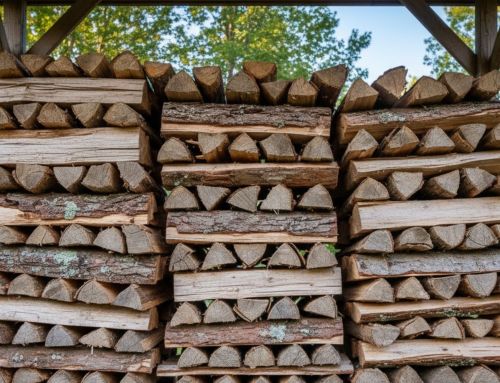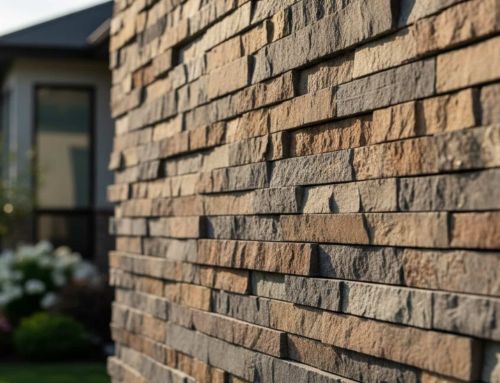Picture walking through the historic streets of Boston’s Beacon Hill, where centuries-old cobblestone beneath your feet tells stories of American history while maintaining its timeless charm and structural integrity. This enduring appeal of cobblestone isn’t just about nostalgia—it represents one of the most durable and aesthetically pleasing paving solutions available today, capable of transforming any outdoor space into a sophisticated landscape feature that can last for generations.
From ancient Roman roads to modern New England driveways, cobblestone has proven its worth as a premium paving material that combines practical durability with unmatched visual appeal. Whether you’re considering a complete driveway renovation, creating elegant walkways, or designing stunning patio spaces, understanding the ins and outs of cobblestone can help you make an informed decision that adds both beauty and value to your property.
Understanding Cobblestone: Definition and History
What is Cobblestone?
Cobblestone refers to naturally rounded or cut stones traditionally used for paving roads, walkways, and driveways. The name comes from “cob,” meaning a rounded lump, and these stones, often granite, basalt, limestone, or sandstone, have been valued for their durability and timeless appeal.
While modern versions often use uniformly cut stones known as setts or Belgian blocks for easier installation, it’s important to distinguish genuine cobblestone from concrete pavers that imitate the look but lack the authenticity and long-lasting quality of natural stone.
Historical Context
Cobblestone paving dates back to ancient Rome, where engineers discovered that laying rounded stones in sand created roads that were both strong and long-lasting. This method spread throughout Europe, becoming a symbol of stability and prosperity in cities where muddy, unpaved roads were replaced with durable stone surfaces.
By the 1700s, cobblestone made its way to Colonial America, especially in port cities influenced by European design. Though its use declined with the rise of automobiles in the 20th century, cobblestone remains popular today for decorative and pedestrian-friendly spaces, prized for its historic charm and lasting strength.
Types of Cobblestone Materials
Granite Cobblestone
Granite is the top choice for cobblestone thanks to its exceptional strength, weather resistance, and low maintenance needs. Formed under intense heat and pressure, this dense, non-porous stone can endure heavy traffic and harsh climates for over a century. Available in natural shades like gray, pink, black, and white, granite cobblestones come in various sizes—typically 4×4 to 6×9 inches—offering both durability and versatile design options for high-traffic areas.
Basalt Cobblestone
Basalt is a dark, fine-grained volcanic stone that offers strong durability and a naturally slip-resistant surface, making it ideal for walkways, patios, and safety-focused areas. While slightly softer than granite, its rich color and textured finish suit both classic and modern designs.
Limestone Cobblestone
Limestone cobblestone provides a softer, more affordable option ideal for moderate-traffic areas. Its natural calcium carbonate composition creates beautiful earth-tone colors, though it requires more careful maintenance in freeze-thaw climates.
Sandstone Cobblestone
Sandstone offers excellent natural grip due to its compressed sand formation, making it perfect for decorative walkways and garden paths. While it wears more quickly than granite or basalt, sandstone’s natural beauty and reasonable cost make it attractive for specific applications.
Cobblestone Applications and Design Ideas
Driveways
Cobblestone driveways offer lasting elegance and strength, with excellent load-bearing capacity and traction that outperforms concrete or asphalt. Thoughtful design elements like pattern choice, border integration, and proper drainage not only enhance curb appeal but also boost property value and reduce long-term maintenance.
Walkways and Garden Paths
Cobblestone walkways add charm, safety, and natural beauty to outdoor spaces, with textured surfaces that offer reliable traction in wet conditions. Whether used for front entrances, garden paths, patios, or pool areas, thoughtful design, like proper curves, width, and landscape integration, ensures both function and visual appeal.
Patios and Outdoor Living Spaces
Cobblestone patios create elegant, low-maintenance outdoor spaces ideal for entertaining and relaxing. Their natural texture adds visual appeal, while the stone’s durability and permeability support features like fire pits, outdoor kitchens, and seasonal furniture without drainage issues or damage over time.
Installation Process and Considerations
Site Preparation
Proper installation begins with thorough site preparation. The area must be excavated to a depth of 8-12 inches, depending on the cobblestone size and intended use. This excavation removes unstable soil and provides space for the essential base layers.
Critical Steps:
- Mark utility locations before digging
- Ensure proper slope for drainage (minimum 1% grade)
- Compact the subgrade to prevent settling
- Plan for access during installation
Base Construction
The foundation consists of a 4-6 inch layer of crushed stone or gravel, properly compacted to create a stable, well-draining base. This layer distributes loads evenly and prevents the cobblestones from shifting over time.
Base Requirements:
- Use angular crushed stone (not rounded gravel)
- Compact in 2-inch lifts with mechanical equipment
- Ensure consistent thickness across the entire area
- Test compaction to verify stability
Sand Bedding and Stone Installation
A 1-2 inch layer of coarse sand provides the final leveling surface for cobblestone placement. The sand must be properly graded and screeded to ensure uniform stone height and stability.
Installation Technique:
- Start from a straight edge or established reference line
- Maintain consistent gaps between stones (typically 1/8 to 1/4 inch)
- Use string lines to ensure straight rows and proper alignment
- Cut stones as needed for borders and obstacles
Jointing and Finishing
The final step involves filling joints between cobblestones with sand, polymeric sand, or mortar, depending on the application and preference. Proper jointing locks the stones together and prevents weed growth while allowing for natural expansion and contraction.
Cost Analysis and Value Proposition
Material and Installation Costs
Cobblestone represents a significant upfront investment, with material costs typically ranging from $10-20 per square foot. Professional installation adds another $30-40 per square foot, bringing total project costs to $40-60 per square foot for most applications.
Cost Factors:
- Stone type and quality
- Project size and complexity
- Site conditions and accessibility
- Local labor rates
- Custom cutting requirements
Long-Term Value
While the initial cost exceeds alternatives like asphalt or concrete, cobblestone’s longevity creates exceptional long-term value. A properly installed cobblestone surface can last 100+ years with minimal maintenance, compared to 15-20 years for asphalt or 25-30 years for concrete.
Value Benefits:
- Minimal replacement costs over decades
- Increased property value (typically 10-15% boost)
- Reduced maintenance expenses
- Energy savings through natural cooling
- Enhanced curb appeal and marketability
Maintenance and Care
Routine Maintenance
Cobblestone requires remarkably little ongoing maintenance compared to other paving materials. Regular sweeping removes debris, while occasional pressure washing restores the natural stone appearance.
Annual Maintenance Tasks:
- Remove weeds from joints
- Replenish joint sand as needed
- Inspect for loose or damaged stones
- Clean stains promptly to prevent penetration
Seasonal Considerations for New England
Massachusetts winters present unique challenges that proper maintenance can easily address. The key lies in understanding how freeze-thaw cycles affect different installation methods and taking appropriate preventive measures.
Winter Care:
- Use sand instead of salt for traction when possible
- Remove snow promptly to prevent ice formation
- Inspect joints for ice damage each spring
- Address drainage issues before they cause problems
Snow removal requires careful technique to avoid damaging individual stones. Plastic shovels or snow blowers work well, while metal shovels should be used cautiously to prevent chipping.
Cobblestone vs. Alternative Materials
Cobblestone vs. Concrete Pavers
While concrete pavers offer lower initial costs, they can’t match cobblestone’s longevity or authentic appearance. Concrete typically lasts 20-30 years before requiring replacement, while cobblestone installations commonly exceed 100 years.
Comparison Factors:
- Durability: Cobblestone wins decisively
- Initial Cost: Concrete pavers cost less upfront
- Maintenance: Both require minimal ongoing care
- Aesthetics: Cobblestone provides authentic natural beauty
- Resale Value: Cobblestone adds more property value
Cobblestone vs. Asphalt
Asphalt provides the smoothest driving surface but requires regular maintenance and replacement every 15-20 years. Cobblestone’s slightly textured surface provides superior traction while lasting decades longer.
Key Differences:
- Lifespan: Cobblestone lasts 5-7 times longer
- Maintenance: Asphalt requires seal coating and patching
- Weather Resistance: Cobblestone handles freeze-thaw better
- Environmental Impact: Natural stone is more sustainable
Design Tips and Best Practices
Pattern Selection
Pattern choice plays a key role in both the look and stability of your cobblestone project. Options like herringbone offer maximum strength and a classic feel, while running bond provides a clean, modern look. Basket weave adds traditional charm, and random layouts create a natural appearance but require skilled installation.
Color Coordination
Choosing the right cobblestone color enhances your home’s overall look. Neutral grays offer versatility, while warm tones like brown or beige add a natural, inviting feel. For best results, match colors to your home’s exterior, consider seasonal landscaping changes, and test small areas before full installation.
Integration with Landscaping
A successful cobblestone installation blends smoothly with the surrounding landscape by using consistent materials for edging, planning proper drainage, adding lighting for safety, and allowing space for plant growth and seasonal changes.
Environmental Benefits and Sustainability
Eco-Friendly Characteristics
Natural cobblestone offers significant environmental advantages over manufactured alternatives. The material requires no energy-intensive production processes, comes from renewable quarry sources, and can be reclaimed and reused virtually indefinitely.
Environmental Benefits:
- Permeable Surface: Allows natural water infiltration
- Local Sourcing: Reduces transportation carbon footprint
- Longevity: Minimizes replacement frequency
- Recyclability: Stones can be reused for other projects
- No Chemical Treatments: Pure natural material
Stormwater Management
Properly installed cobblestone helps manage stormwater runoff through its naturally permeable joints. This characteristic reduces strain on municipal drainage systems while preventing erosion and water pollution.
The permeable nature also helps recharge groundwater supplies and reduces the heat island effect common with large expanses of impermeable pavement.
Conclusion
Cobblestone is more than just a timeless design choice—it’s a practical, durable, and eco-friendly solution for Massachusetts landscapes. Whether you’re upgrading a driveway, walkway, or outdoor living space, natural cobblestone offers lasting value, charm, and performance that outshines concrete or asphalt. With proper installation and minimal upkeep, cobblestone surfaces can serve your home beautifully for generations.
Ready to transform your outdoor space with authentic cobblestone? Visit Old Station Outdoor & Landscape Supply in Norton, MA, to browse our premium selection of granite, basalt, and other natural stone materials. Our expert team is here to help from product selection to project planning. Stop by our showroom or contact us today to get started on your next landscape upgrade.
FAQs
What is cobblestone pavement?
Cobblestone pavement is a durable surface made from small, naturally rounded stones that are fitted together to create roads and walkways. This traditional paving method has been used for centuries in town centers around the world.
Why is it called cobblestone?
The term “cobblestone” comes from the word “cob,” meaning a rounded lump or mass, referring to the naturally smooth stones that rest on the prepared ground beneath.
How durable is cobblestone?
Cobblestone is extremely durable and perfect for both heavy traffic and leisure walking, designed to withstand harsh conditions that would destroy other materials. You won’t miss the longevity benefits when choosing this time-tested option.
How long do cobblestone streets last?
Properly constructed cobblestone streets can last 500+ years, making them valuable investments for towns looking to capture long-term durability and save money on ground replacement. Historic districts often request cobblestone pavement in this case of preservation projects around the world for both heavy traffic and leisure use.










